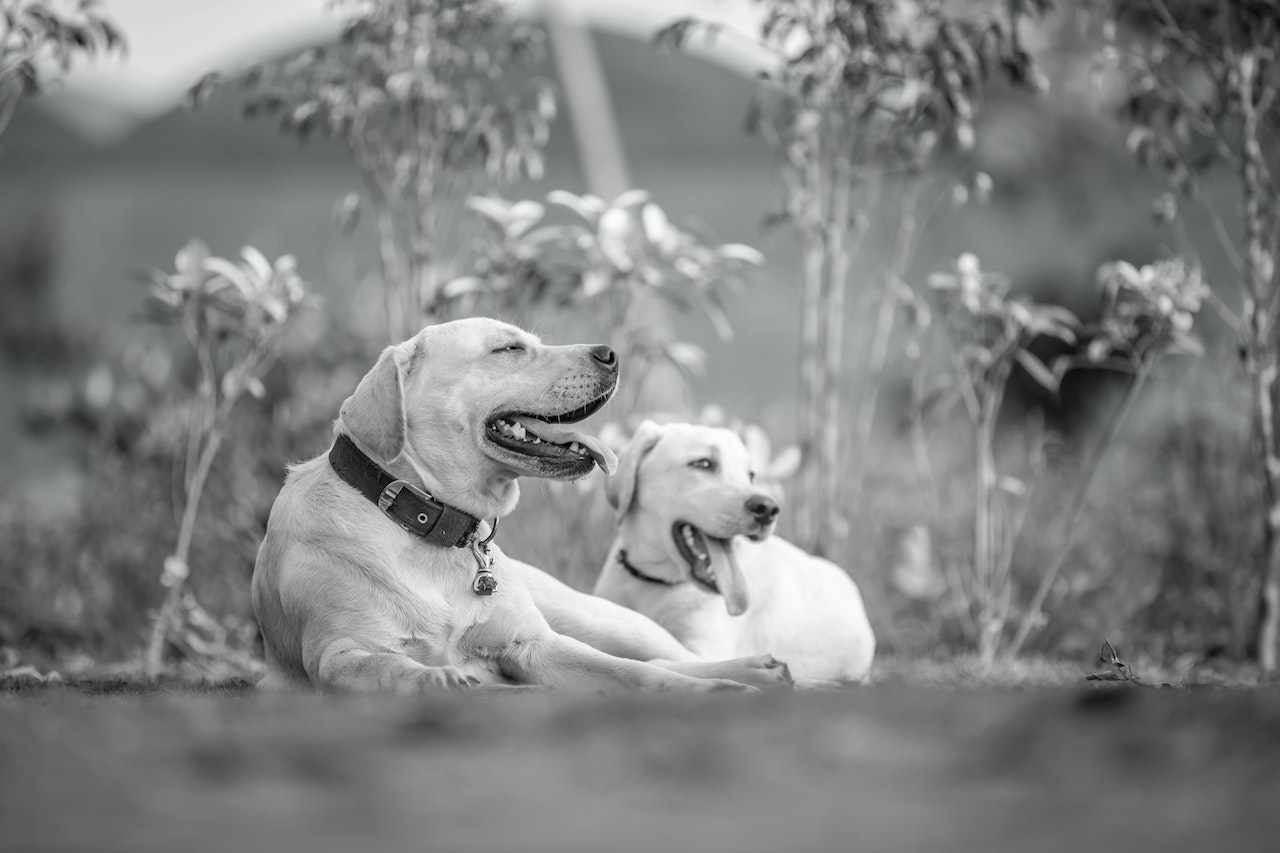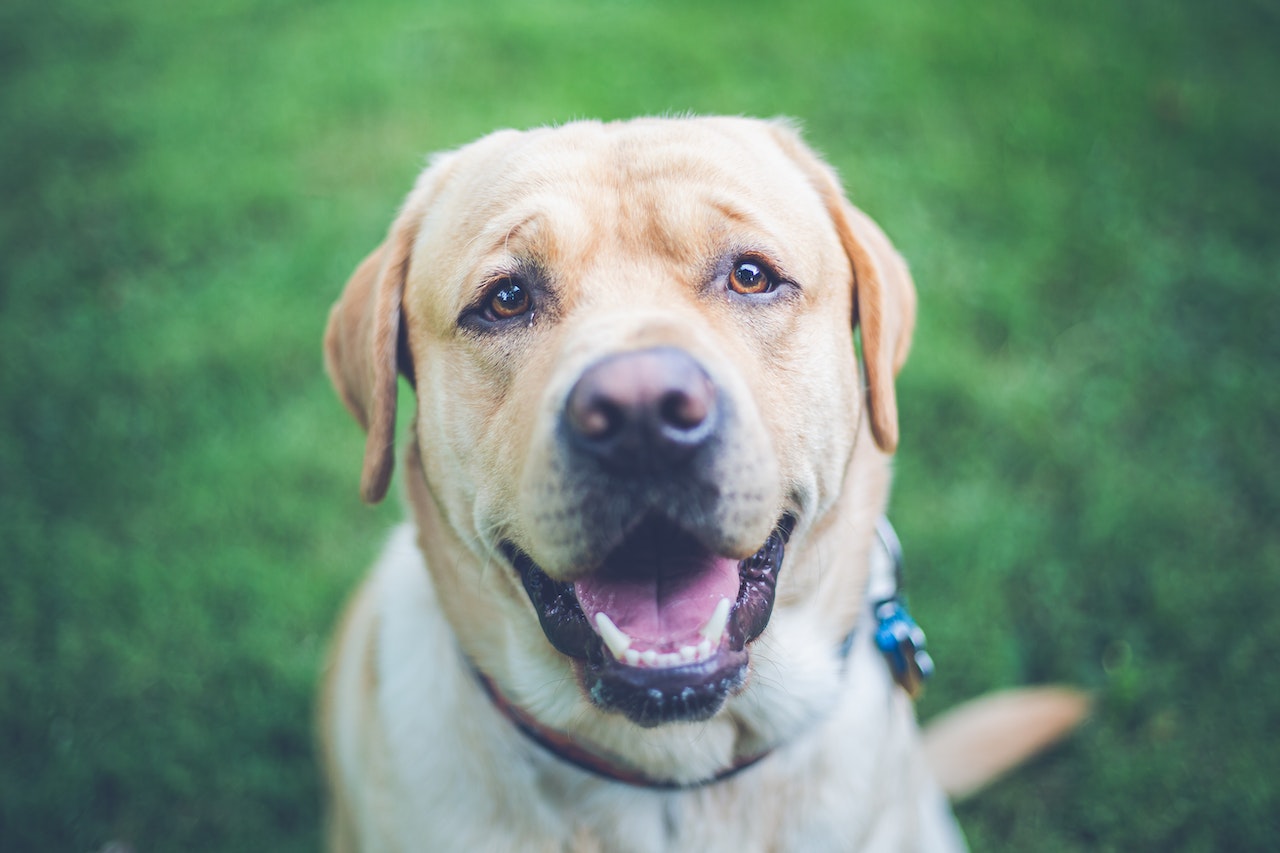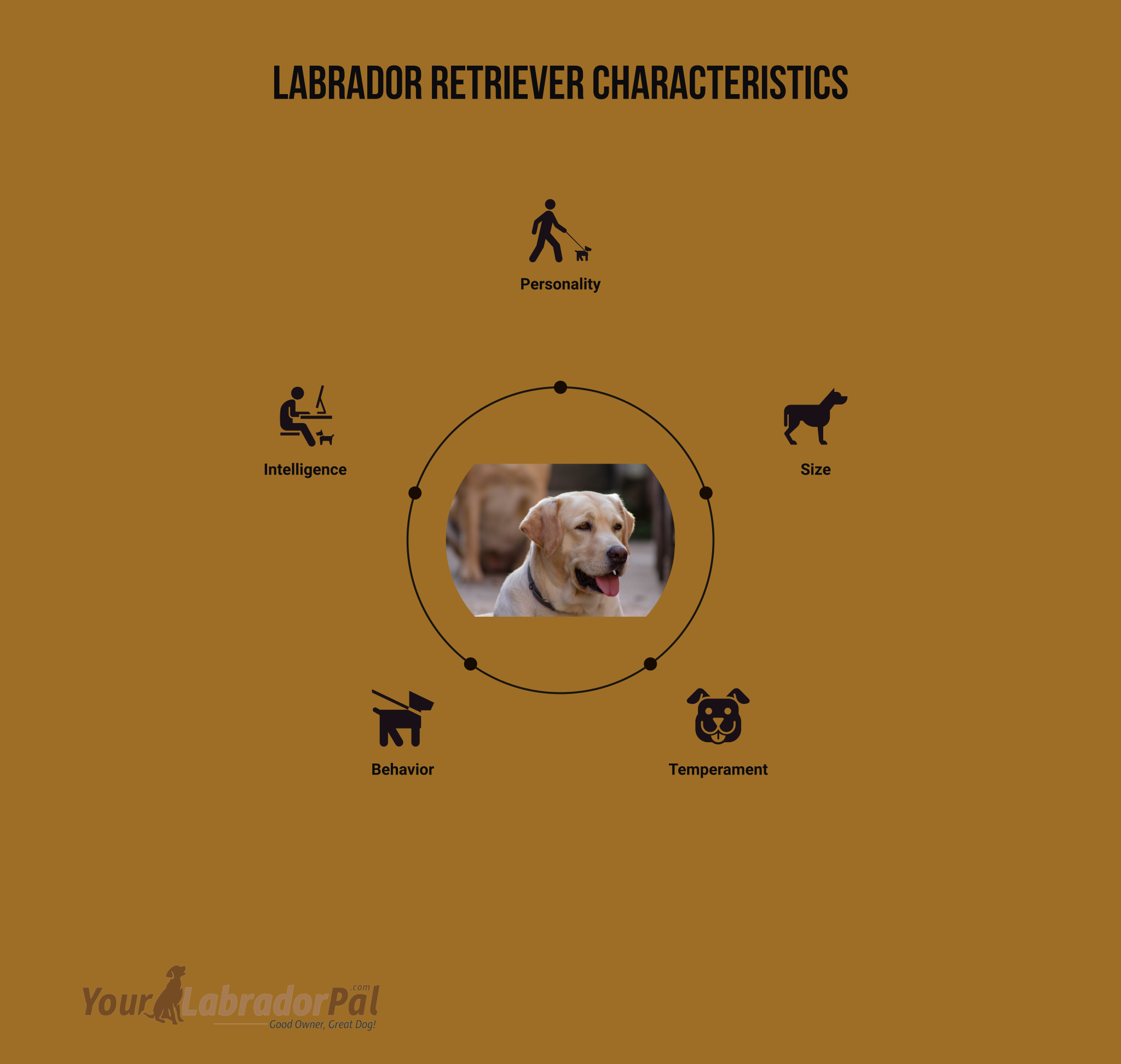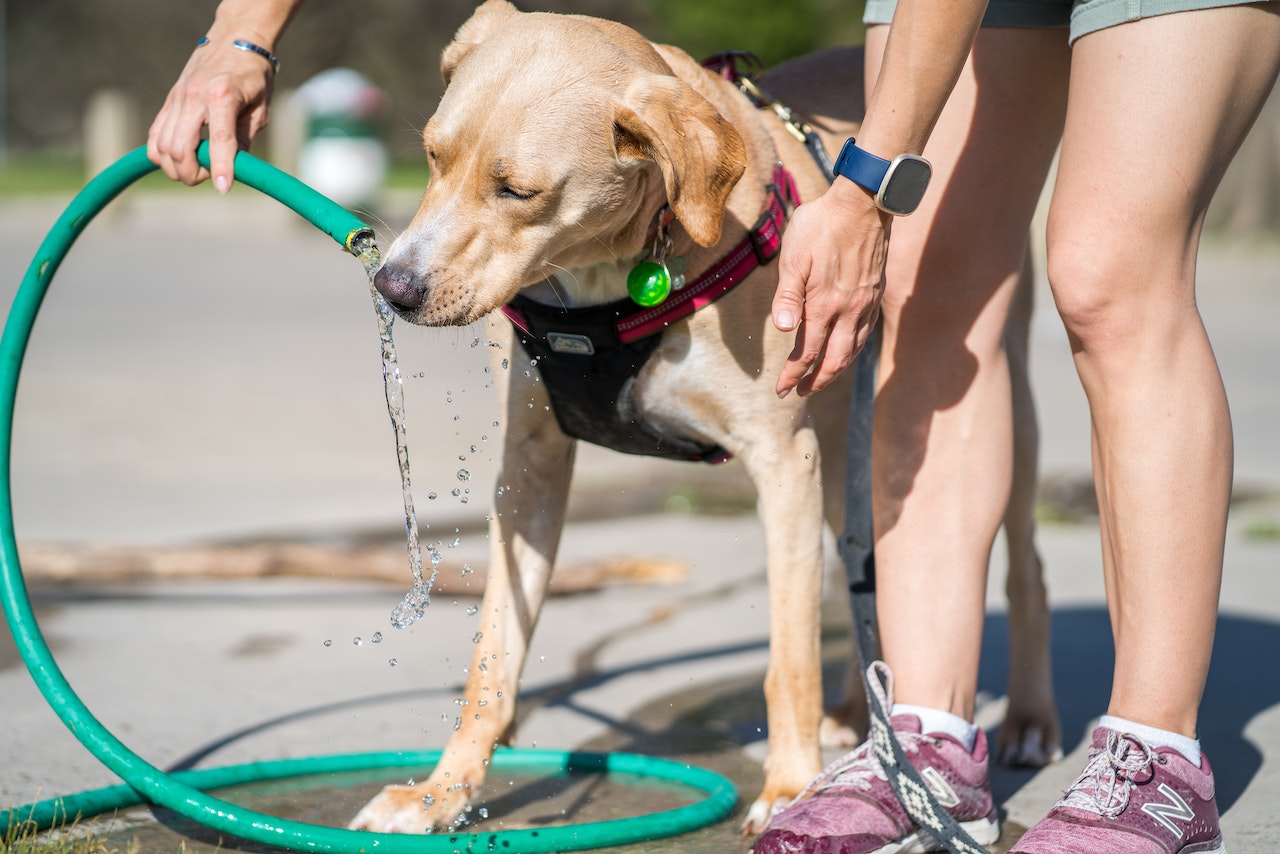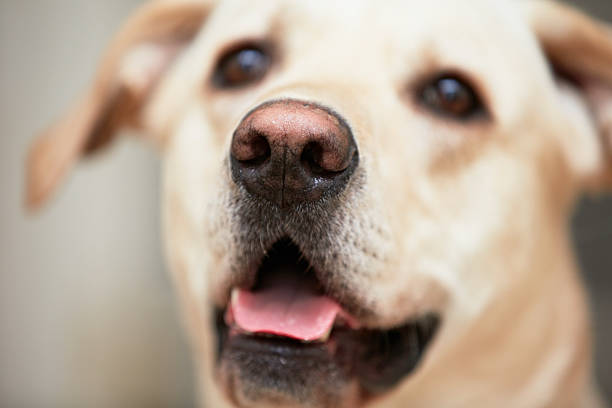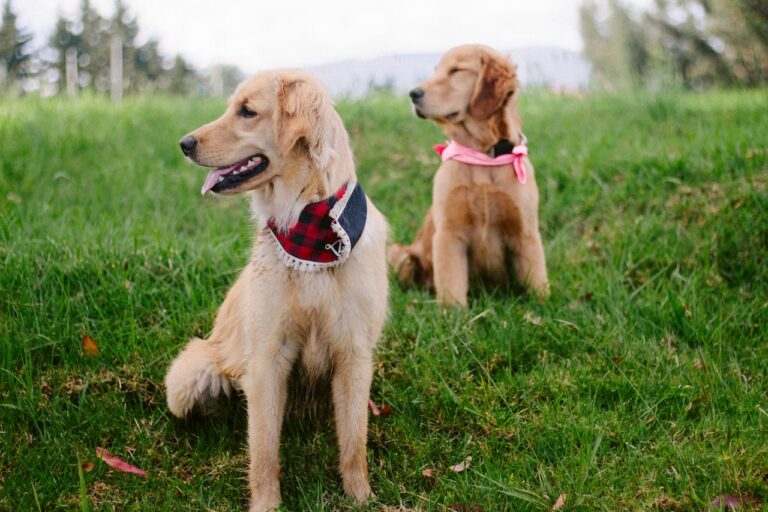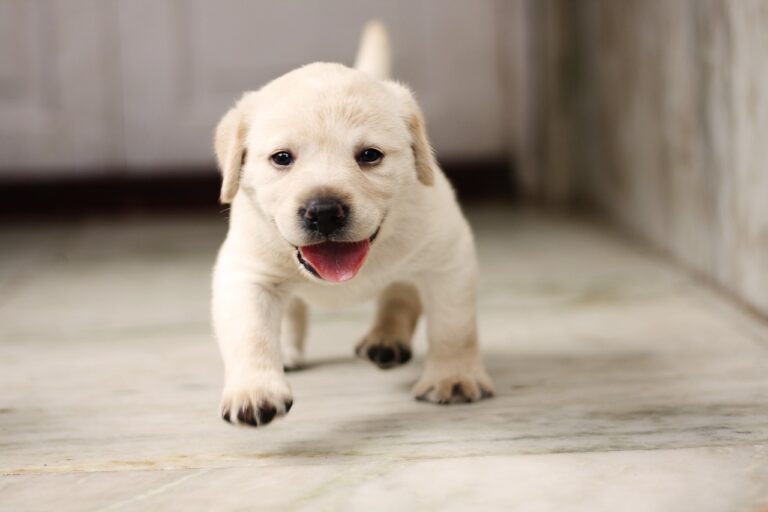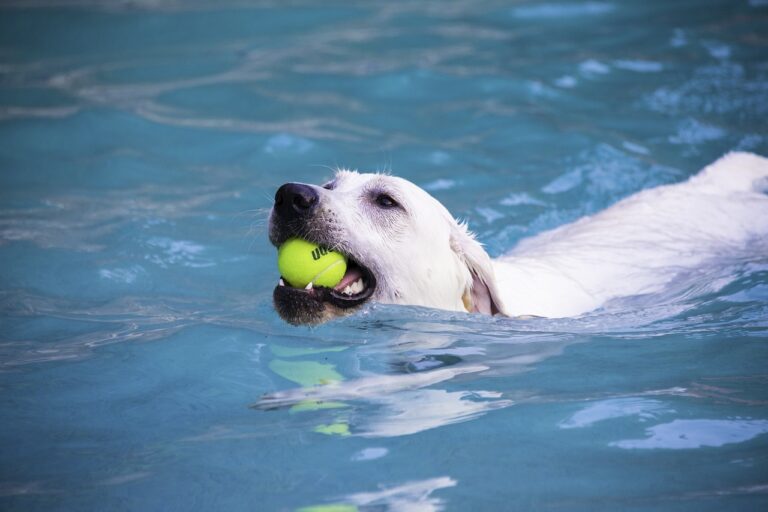The History and Origins of Labrador Retrievers: A Comprehensive Guide
Are you interested to know when did Labrador retrievers originate? A well-liked and well-known dog breed is the Labrador Retriever, usually called the “Lab.” These dogs are frequently used as therapy, service, and family pets because of their extroverted and pleasant personalities. Labs are excellent swimmers with a strong want to fetch and retrieve; they were originally developed as retrievers for hunting.
They are also quite trainable and versatile, which makes them popular among dog owners of all stripes. It’s hardly surprising that Labradors are among the most famous dog breeds in the world, given their devoted and loving nature.
We may appreciate Labrador Retrievers and their significant role in human civilization for ages if we are aware of their origins and historical development. This book will provide a thorough and fascinating look into the Labrador Retriever, whether you are a lover of dogs, a history enthusiast, or simply wondering about the beginnings of one of the most popular dog breeds in the world. Keep reading to learn more.
The Labrador Retriever Breed
According to the American Kennel Club, the Labrador Retriever is the most popular breed in the country. Even those who are not dog lovers can recognize a Labrador, and painters and photographers have frequently shown them in this way—often as a devoted friend who patiently waits for their owner.
The Labrador is athletic and built for sport. They are amiable, have a short, easy-to-care-for coat, sharp intelligence, and have lots of activity. There is a strong devotion to this breed; owners and admirers frequently compare their Labradors to angels. Labradors are devoted, people-oriented dogs who love to serve their family.
The Labrador retriever temperament making them a great therapy dog for visiting hospitals and nursing homes, and their intelligence making them a great support dog for those with disability. Thanks to their athletic frame, powerful noses, and brave personalities, they can perform admirably as search and rescue dogs or as retriever dogs for hunters. And in canine sports like agility and obedience events, especially obedience Labs has emerged as the breed to beat.
Watchdog is one canine task that Labs could be more effective at. Owners claim that their friendly Lab will likely welcome visitors and gladly reveal where the valuables are hidden. With ease, Labrador Retrievers have transitioned from being a fisher partner to an area retriever through an event dog to a modern working dog throughout the breed’s origin. Wonderful buddy and companion have been one role that hasn’t changed.
The Origin of Labrador Retrievers
In England, the Labrador Retriever was recognized as a breed by the Kennel Club in 1903, and it was the first dog to be registered in the United States in 1917. Historically, Labradors were known as St. John’s or Lesser Newfoundland dogs. Beginning in the early 1800s, the breed was transported to England from Newfoundland. Although the precise ancestry of the Labrador is uncertain, some speculate that the French St. Hubert’s dog or the Greater Newfoundland dog were bred together to create the St. John’s dog.
⌛Newfoundland 1500s
English fishermen began to inhabit Newfoundland in the 1500s, and the St. John’s dogs appeared to grow in popularity alongside the fishing industry. The St. John’s dog assisted the English fishermen in Newfoundland in hauling in fishing lines across the water as well as retrieving fish that had slipped off their hooks.
The retrieving activities offered in the fishing environment were enjoyable for the St. John’s dogs, who were regarded as “workaholics.” This breed had a strong desire to. They make excellent hunting partners and sporting dogs due to their eagerness and retrieving skills.
⌛Brig Canton 1807
Some St. John’s dogs were transported in 1807 on the Brig Canton to Poole, England, where they were likely used as breeding for the Duke of Malmesbury Labrador Kennel. Two dogs—one black and one chocolate—found on the wrecked Canton ship are said to have contributed to the Chesapeake Retriever breeding program. We now know that the original St. John’s canines, later known as Labrador Retrievers, had the color chocolate in them. The yellow & chocolate puppies would sporadically appear in litters throughout time since they are recessive colors.
These “off colors” were frequently “culled” during the older breeding programs before they were eventually recognized and registered by the British & American Kennel Clubs. Some continue to choose black Labradors, claiming they are the best. As long as your dog comes from a well-balanced pedigree and breeding program, it is more of a personal choice.
Labradors were on the verge of extinction a few times, and the St. John’s dogs—from which Labs descended—are now extinct in Newfoundland. We only have the delightful canine companion we know as the Labrador today because of a few significant events and the efforts of a few critical individuals. The first dogs were brought to England in the early 1800s and given to a select group of affluent British sportsmen.
⌛Earl of Malmesbury 1809
As early as 1809, the Earl of Malmesbury of Heron Court participated in shooting competitions with his St. John’s dog. The person most responsible for preserving the Labrador breed was the second Earl of Malmesbury, born in 1778. He established the first Labrador kennel. Until his death in 1841, he ensured his kennel was well-stocked.
⌛5th Duke of Buccleuch 1884
In a separate venture from Malmesbury, the 5th Duke of Buccleuch (1806–1844), they established his kennel in Scotland in 1835. In 1839, the dog use of Labrador was first noted. The St. John’s dogs of Newfoundland were also beginning to be imported by the Duke’s sibling, Lord John Scott. The brothers brought several canines named Jock, Nell (1843), and Brandy.
When he was being carried over the Atlantic, Brandy got his name. He dove overboard into choppy water to retrieve one of the crew members’ caps. The dog was so worn out when they finally managed to pick him up after waiting for two hours that they used Brandy to revive him. The Duke’s dog, Nell, was the first Labrador Retriever to be captured on camera. When the 1856 photograph seen was taken, she was around 12 years old.
⌛Wolters 1867
This is the first known image of a Labrador, according to Wolters, who stated in his book that it was taken in 1867. This dog (St. John’s) has white paws and a white muzzle and was bred to produce Labradors. This characteristic was seen in certain other Labradors raised in England in the 1800s. The breed standard today prefers that the coat color not contain any white.
You may observe that the paws & muzzle of the modern Labrador occasionally become grayer with age. Some leftover St. John’s Dog? The Earl of Home (1799–1881), who possessed Nell, shown here at 12, is shown.
⌛Earl of Malmesbury 1887
In a letter, he sent referring to them as his Labrador Dogs, the Earl of Malmesbury first used the name Labrador. Geographically, the jurisdiction of Labrador is located close to the northwest of Newfoundland. According to Richard Wolters in his book, “The Labrador Retriever,” the British considered the region one large geographical mass in the 19th Century. Thus it’s possible that the phrase applied to canines from that region.
⌛Kennel Club 19th Century
The Labrador had so many wonderful traits that additional “Retrievers” have been bred from it. Before the Kennel Club registered any dogs, several breeders attempted to interbreed the hunting prowess of various retrieving dogs in the late 18th & early 19th centuries. During the period, there were also flat-coated, curly-coated, and Norfolk Retrievers, which are now extinct.
It was claimed that crosses frequently retained appearance and personality because the St. John’s genes were frequently dominant. The several breeds were eventually fixed and divided in the Kennel Club registry.
⌛Labrador Retriever 1903
The Labrador Retriever gained enough popularity in 1903 to be acknowledged by the English Kennel Club. With the help of Lord Knutsford (of the Munden Kennel line) & Lady Lorna, Countess Howe (of the Banchory Labradors), the Labrador Club was established in England in 1916. According to legend, several chocolate labs may be traced to FC Banchory Night Light of the Banchory Kennel.
They were black dog who was born in England in 1932. Night Light is a product of the Dual Ch range. Banchory Bolo (1915) looks to be a Buccleuch Avon chocolate gene carrier. Another characteristic of Banchory Bolo was that they had white hair under their feet.
⌛Modern Times
The Labrador Retriever has a high work ethic and is a working dog. It is typical to see them employed in a variety of professions. The most typical job for Labrador Retrievers is guiding dogs. Labrador Retrievers make up more than 60% of all guiding dogs worldwide.
However, Labrador Retrievers are being used for purposes other than just as support dogs. Labradors are frequently used in rehabilitation, carting, detecting, rescue, and search operations like tracking.
Due to their intelligence and trainability, Labrador Retrievers may assist hunters by marking the spots where the birds fall and recovering the dead birds with their noses. They are excellent hunting partners because of how quietly they do their business.
Labrador Retriever Characteristics
Popular dog breeds like the Labrador Retriever are renowned for their amiable personalities and high activity levels. The following are some characteristics that Labrador Retrievers commonly exhibit:
➤Personality
The Labrador retriever has a well-deserved reputation for being one of the sweetest-natured dog breeds. They are pleasant to both people and other animals, extroverted, and ready to please.
In addition to having a charming attitude, they are intelligent and eager to please, making them simple to teach. Due to their high level of energy and excitement, this breed needs training. The Lab is active since it has a functioning history. For this species to be content, it needs both mental and physical stimulation. There are different levels of activity among Labs; some are loud, and others are more subdued. The action benefits us all.
➤Size
Males weigh 65 – 80 pounds and measure 22.5 to 24.5 inches tall. Females weigh 55 – 70 pounds and are 21.5 – 23.5 inches tall.
➤Temperament
The friendly, extroverted, and devoted disposition of the Labrador Retriever is well-known. They are characterized as clever, gregarious, and playful. Labrador Retrievers get along well with kids and are wonderful family dogs.
They are excellent companions for outdoor activities like swimming, hiking, & fetching games since they have a lot of energy and enjoy playing and exercising. They are renowned for their affinity for the water and their innate ability to retrieve, making them great hunting partners.
Labrador Retrievers are easily trained and react well to training methods that include positive reinforcement. They are simple to train and give new orders since they desire to please their masters. The kind and patient attitude of Labrador Retrievers is another trait that makes them suitable therapy dogs. The Labrador Retriever is a wonderful choice for hunters, families, and anybody searching for a loving and active companion due to its kind, devoted, and passionate demeanor.
➤Behavior
A sociable and outgoing breed, Labrador Retrievers are renowned for their lively dispositions and desire to please their human owners. They are good choices for homes with children & other pets since they are very friendly dogs who get along with both people and other animals. In addition to their high activity levels and affinity for the water, labs are excellent companions for families or adults who lead busy lifestyles.
Due to their intellect and desire to please, labs are typically simple to train, but if they do not get enough exercise & mental stimulation, they may become destructive. To maintain the physical and emotional well-being of their Labradors, owners should give them lots of opportunities to exercise, play, and participate in training.
➤Intelligence
The breed of dog known as the Labrador retriever is exceptionally clever. Their intelligence & trainability make them a popular choice for various vocations, including assistance dogs, therapy dogs, & search and rescue dogs. They were designed to be working dogs, primarily to recover game during hunting.
The University of British Columbia’s Stanley Coren, a leading authority on canine intelligence, places Labrador Retrievers seventh out of 138 breeds regarding intellect and trainability. They respond well to positive reinforcement training techniques because they are strongly motivated by food and praise.
Additionally, Labrador Retrievers are excellent problem-solvers and comprehend complicated jobs. They have excellent recall and can pick up new instructions and jobs fast. Because of this, they are perfect for occupations requiring a high level of intellect and trainability, including those of guide dogs to the blind and other support dogs. Overall, the Labrador Retriever’s intelligence and trainability make them a great choice for various occupations and duties and for being devoted and adoring family companions.
Labrador Retriever Proper Caring
✔️Nutrition
The Labrador Retriever should thrive on a premium canine diet, whether cooked at home or in a professional kitchen, under the guidance and consent of your veterinarian. Any diet should suit the dog’s age (adult, puppy, or senior). So keep an eye on your dog’s calorie intake and weight, as certain dogs are prone to obesity.
Treats may be a valuable training tool, but offering them in excess might lead to obesity. Discover which foods fit the bill for canine consumption and which don’t. See your veterinarian if you have any worries about your Labs weight or nutrition. Fresh, clean water should always be accessible.
✔️Grooming
The Lab has a double coat that is shaggy and thickly water-repellent. Give them baths every so often to keep them clean. Like all breeds, the Labrador retriever needs regular nail trimming and frequent teeth brushing.
✔️Exercise
The Labrador Retriever is a boisterous and extremely active breed requiring daily loads of exercise. Lack of exercise makes a Lab more prone to act hyperactively and destructively as a way to let off steam. Retrieving and swimming are the breed’s favorites.
Labs also like engaging in dog sports, including agility, tracking, obedience, and dock diving, as well as going on hunting expeditions or competing in field trials. Additionally, many Labs put in a lot of effort in crucial capacities, including search and rescue, drug and explosives detection, assistance, and service dogs.
✔️Training
Due to the Lab’s physical prowess and high activity level, puppy training programs and early socialization are essential. The puppy should be gradually introduced to a wide range of people, places, and circumstances between seven weeks and four months. Early obedience training will also help the puppy grow into a well-adjusted, polite adult.
Puppy training lessons aid in socialization and teach owners how to spot and correct any undesirable tendencies that could be forming in their puppies. Labs should be included in family activities since they are loyal, knowledgeable, and eager companions.
✔️Health
Labs are healthy dogs, and a reputable breeder checks the parents of future puppies for diseases, including elbow and hip dysplasia, heart problems, muscle weakness, and eye abnormalities like progressive retinal atrophy. Some young adult Labradors can develop a disorder known as exercise-induced collapse (EIC); a DNA test enables breeders to identify carriers & organize breedings to prevent the disease from being produced.
Like other big, deep-chested canines, Labs can have bloat, a potentially fatal gastrointestinal disease. Owners should know the signs that suggest this is happening and what to do in that case.
Living With Labrador Retriever
Having a Labrador as a pet might be among the most satisfying things you’ve ever done. You receive a pet that welcomes you home with great enthusiasm, will offer you hugs & cuddles, and will do so much more. But having a Lab also comes with its own difficulties, for which you must be prepared. You will learn about what you must plan for in your daily life with Labradors in this post.
👉Energetic Dogs
The energy level of Labrador Retrievers is among the first characteristics owners notice about them. And since you’re here, you presumably already know how energetic the Lab is. You must acclimate to Labradors’ high energy level if you want to live with them. This entails taking them on frequent walks, playing, and ensuring that they are cognitively occupied to prevent them from being overly bored.
A Labrador Retriever’s activity level is crucial because only some have the time to keep up with a Lab. A Labrador will rapidly switch to activities you won’t enjoy if given no opportunities to let off steam. They could even begin barking excessively merely out of boredom.
Be aware, too, that occasionally individuals need an enthusiastic dog more than anything. With the activity you receive from walking with them, owning a Lab may be a terrific way to stay in shape. Additionally, a big part of what causes them to so endearing and lively is their energy. Even when they are well into their middle years, their enthusiasm maintains them looking young. This aids in preserving the Labrador Retriever’s young strength.
👉Space
Next, remember that you will need room if you live in a lab. To be capable of moving about and using their energy in useful ways, Labradors require a lot of space. However, this does not imply that keeping a Labrador Retriever requires an unreasonably huge home. Many individuals successfully coexist in their flats with their Labradors. Just make sure your Labrador has enough space to move around without crashing into too many things or destroying delicate items.
In any event, your Labrador Retriever won’t be exercising primarily indoors. You must take them outside so they may play and wander. Remember that you might need to make some room in your house to make room for them. This is particularly true when they are young pups and actively investigating their environment with their inquisitive noses.
👉Food Lover
Of course, we can’t ignore how much Labs like food when we talk about them! They are infamous for having huge appetites and bellies that appear to go on forever. Research that found many Labrador Retrievers had genetic defects that prevent them from feeling satisfied lends scientific support to their love of food. Living with Labradors requires adjusting to their love for food as well as controlling their dietary needs.
Because of this, Labs are prone to obesity, but more on that later on. You have to ensure you can afford to provide your Lab with the right nutrients to keep them healthy and strong. Since Labrador Retrievers are a medium-sized breed and can pack some weight, food will also be a cost that you will have to live with.
Frequently Asked Questions
What is a Labrador’s average lifespan?
One of the breeds of dogs that live the longest is the Lab. A Labrador’s average lifespan is between 10 and 14 years. The lifetime of the Labrador can also be influenced by its hue. Chocolate Labradors live 10 to 11 years on average.
When does a Labrador reach adulthood?
The Labrador is a breed that matures quickly. Labradors fill out until the age of two but achieve their peak height between six and twelve months. By doubling the size at 16 weeks of age, one may predict the final size of a Labrador puppy. The times-two formula is another name for this.
What ailments affect Labradors frequently?
The most common joint issues in labradors are elbow and hip dysplasia. They suffer agony, become immobile, and are unable to move normally as a result. These illnesses can be avoided with a nutritious diet high in vitamins and minerals and regular exercise. Bloating, ear infections, & heart problems are typical in addition to dysplasia.
Are Labradors an aggressive breed of dog?
Labradors are tolerant, kind, and relaxed back. They are the ideal pet for a youngster because they are not at all anticipated to be aggressive or attack-prone. Like any other breed, Labradors could become violent if they perceive a threat to the family or feel threatened themselves.
For what use were Labradors initially bred?
They appear in classic tales as almost mythological water dogs that bring sailors’ hats in freezing waters and howling gales. Labrador are big-hearted, trainable, and smart. They could swim while holding ropes in their jaws, and occasionally, according to legend, they paddled out to save stranded ships.
Final Thoughts
The actual origins of Labrador Retrievers are somewhat unknown; they were first produced in the 18th Century by fishermen in Newfoundland, Canada. They were then improved upon and developed further in England, where they were well-liked as retrieving and hunting dogs. Due to their reputation for loyalty, intelligence, and friendliness, Labrador Retrievers are among the most well-liked dog breeds worldwide. Dogs have played significant roles in human culture, from assisting fishermen to acting as cherished family pets. Do you want to know what breeds make up a Labrador retriever? Click Here!

